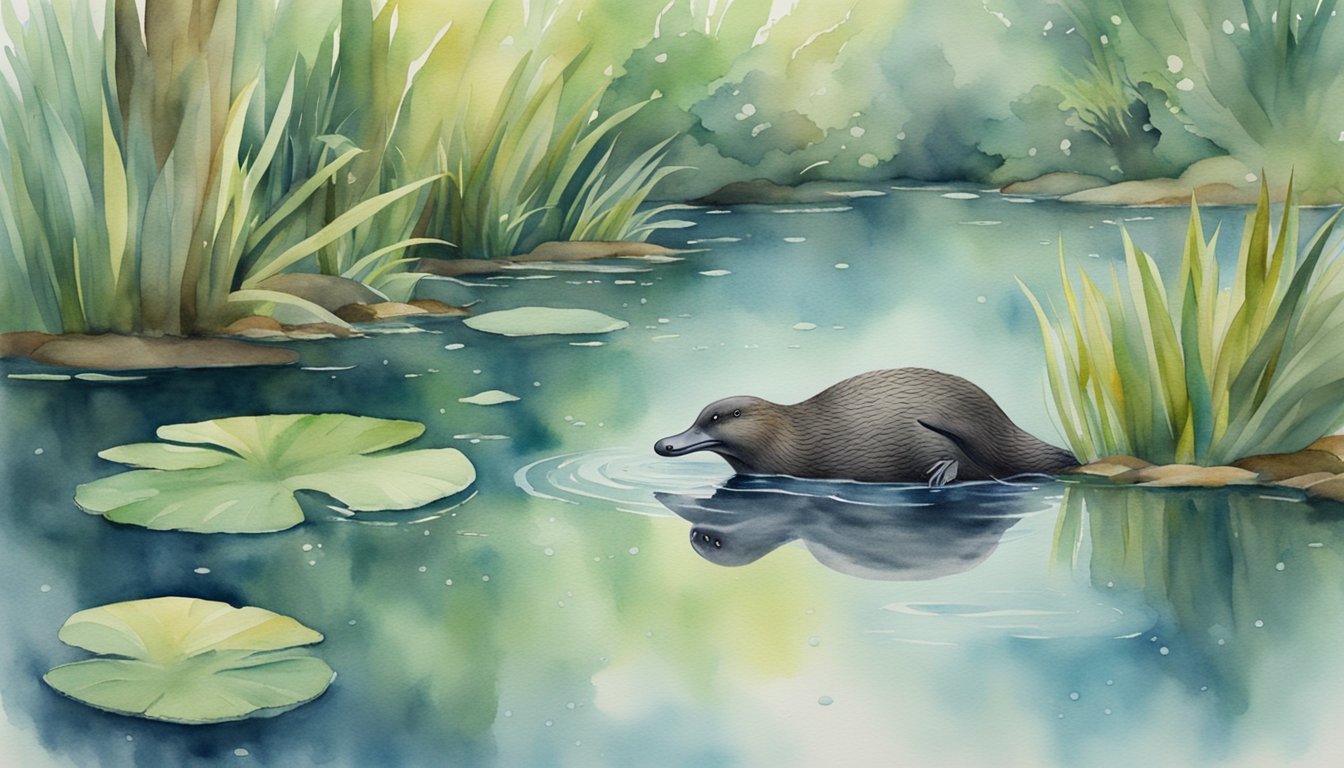Understanding the Platypus
The platypus, or Ornithorhynchus anatinus, is a singular creature in the animal kingdom, dwelling in the waterways of eastern Australia. This section unveils the biology, habitat, and the unique lifestyle of one of the few egg-laying mammals in the world.
Biology and Physical Characteristics
Platypuses belong to a small group of mammals called monotremes, which includes the echidna. An adult platypus has a body and head measuring about 15 inches long, complemented by a 5-inch tail. Their most distinctive features are the duck-billed snouts, webbed feet, and waterproof, brown fur.
Habitat and Distribution
These semiaquatic mammals are found in freshwater environments throughout eastern Australia and Tasmania, from cold highlands like the Australian Alps to tropical rainforests on Kangaroo Island. They live in riverbanks, creating burrows for shelter.
Behavior and Diet
Platypuses are carnivorous, primarily feeding on insects, larvae, worms, and crayfish, located through their bill’s electroreceptors. They exhibit nocturnal foraging behaviors, swimming and searching for prey predominantly underwater in streams and rivers.
Reproduction and Lifespan
Breeding season takes place between June and October. Females lay 1-2 eggs and secrete milk through specialized skin patches to feed their young. Platypuses can live up to 10-17 years in the wild, with females generally outliving males.
Unique Features and Conservation
Unique among mammals, platypuses possess ankle spurs in males, capable of delivering venom. Their conservation status is currently near threatened, with habitat destruction and waterway pollution posing significant risks.
- For more details on their peculiar physical characteristics, see Fact Animal’s Peculiar Platypus Facts.
- Learn about their habitat and the threats they face on the World Wildlife Fund page.
- National Geographic offers additional insights into the platypus’s unique lifestyle and biology.
- Explore more about the platypus’s distribution and habitat via Britannica.
- For a comprehensive overview of their living habits and diet, visit the Australian Platypus Conservancy.
Platypus in Culture and Myth

The platypus has intrigued human imagination, taking a special place in both cultural history and modern media. Its peculiarity has fed myths and has been featured in various forms of literature and entertainment.
Historical Significance and Mythology
In the rich tapestry of Aboriginal mythology, the platypus holds a significant place. Known as “burrunjor” in some Aboriginal languages, it is an emblem of individuality and uniqueness. The creature’s distinctive features and semi-aquatic lifestyle led to its use in storytelling as a symbol of adaptability and the blending of traits. These stories and the reverence held by indigenous Australians emphasize the platypus’s special role in the natural world.
The Platypus in Media and Literature
The platypus’s unusual appearance has also captured the fascination of Europe, with early European naturalists at first believing the animal was a fabrication, made of parts from other animals. This skepticism is a testament to the platypus’s unique place in natural history. In modern day, the platypus has been a subject in various media forms, making appearances in children’s books, television shows, and as the mascot for environmental and conservation efforts. The creature’s charm and the air of mystery surrounding it continue to inspire and educate audiences worldwide through platforms like National Geographic.

